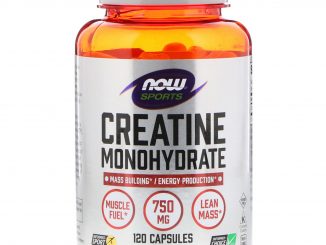The properties of Creatine
Creatine is an organic compound with the nominal formula (H2N)(HN)CN(CH3)CH2CO2H. This species exists in various modifications (tautomers) in solution. Creatine is found in vertebrates where it facilitates recycling of adenosine triphosphate (ATP), the energy currency of the cell, primarily in muscle and brain tissue. Recycling is achieved by converting adenosine diphosphate (ADP) back to ATP via donation of phosphate groups. Creatine also acts as a buffer.
Creatine use can increase maximum power and performance in high-intensity anaerobic repetitive work (periods of work and rest) by 5 to 15%. Creatine has no significant effect on aerobic endurance, though it will increase power during short sessions of high-intensity aerobic exercise.
Creatine is reported to increase cognitive performance, especially in individuals with inadequate intakes in their diet and is claimed by some sources to be a nootropic supplement.
Creatine-monohydrate is suitable for vegetarians and vegans, as the raw materials used for the production of the supplement have no animal origin.
According to a clinical study focusing on people with various muscular dystrophies, using a pure form of creatine monohydrate can be beneficial in rehabilitation after injuries and immobilization.
A clinical study has shown that the intake of pure, high-quality creatine alone, or in combination with exercise, may reduce and delay age-related muscle atrophy, by improving fat-free body mass, muscle strength and endurance, while simultaneously improving bone density.



























































